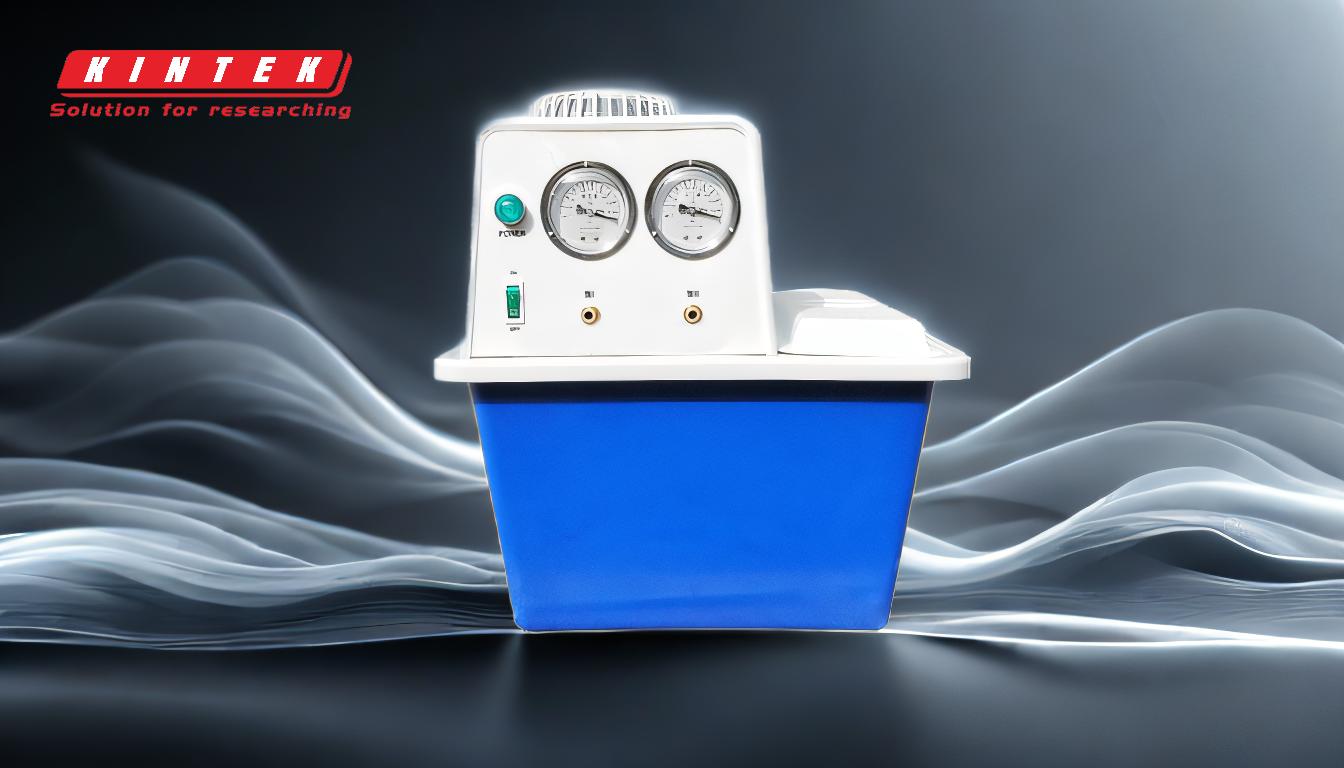The two most common types of vacuum pumps are rotary vane pumps and turbomolecular pumps. Rotary vane pumps are widely used for creating low to medium vacuum levels and are known for their reliability and cost-effectiveness. Turbomolecular pumps, on the other hand, are used for achieving high vacuum levels and are essential in applications requiring ultra-high vacuum, such as in semiconductor manufacturing or advanced research. These pumps are often used in conjunction with other vacuum systems, such as a vacuum muffle furnace, to achieve the desired vacuum environment for specific processes.
Key Points Explained:

-
Rotary Vane Pumps:
- Functionality: Rotary vane pumps operate using a rotating mechanism with vanes that trap and compress gas, creating a vacuum. They are typically oil-sealed to enhance performance and reduce wear.
- Applications: These pumps are commonly used in laboratories, industrial processes, and HVAC systems. They are ideal for applications requiring low to medium vacuum levels, such as degassing, drying, or simple vacuum furnaces.
- Advantages: They are cost-effective, easy to maintain, and provide consistent performance over time. Their compact design makes them suitable for a wide range of setups.
- Limitations: Rotary vane pumps are not suitable for achieving ultra-high vacuum levels and may require regular oil changes and maintenance.
-
Turbomolecular Pumps:
- Functionality: Turbomolecular pumps use high-speed rotating blades to direct gas molecules toward the exhaust, creating a high vacuum. They operate at very high speeds (up to 90,000 RPM) and are often paired with backing pumps.
- Applications: These pumps are essential in industries requiring ultra-high vacuum, such as semiconductor manufacturing, space simulation, and advanced research laboratories. They are also used in specialized vacuum systems, including vacuum muffle furnaces, where precise vacuum control is critical.
- Advantages: They can achieve extremely low pressures (down to 10^-10 Torr) and are highly efficient for high-vacuum applications. Their oil-free operation reduces contamination risks.
- Limitations: Turbomolecular pumps are more expensive and complex to maintain compared to rotary vane pumps. They also require a backing pump to operate effectively.
-
Comparison and Complementary Use:
- Rotary vane pumps are often used as backing pumps for turbomolecular pumps, creating a two-stage vacuum system. This combination allows for efficient evacuation of large volumes of gas initially (using the rotary vane pump) and achieving ultra-high vacuum levels (using the turbomolecular pump).
- In systems like a vacuum muffle furnace, both types of pumps may be used depending on the process requirements. For example, rotary vane pumps might be sufficient for basic vacuum heat treatment, while turbomolecular pumps are necessary for advanced processes requiring ultra-high vacuum.
-
Integration with Vacuum Systems:
- Both types of pumps are integral to vacuum systems used in furnaces, particularly in high-temperature processes where maintaining a controlled vacuum environment is critical. For instance, in a vacuum muffle furnace, the choice of pump depends on the desired vacuum level and the specific application, such as annealing, brazing, or sintering.
By understanding the distinct features and applications of rotary vane and turbomolecular pumps, users can select the appropriate pump for their vacuum system, ensuring optimal performance and efficiency.
Summary Table:
| Feature | Rotary Vane Pumps | Turbomolecular Pumps |
|---|---|---|
| Functionality | Oil-sealed, rotating vanes for low-medium vacuum | High-speed blades for ultra-high vacuum |
| Applications | Labs, HVAC, industrial processes | Semiconductor manufacturing, advanced research |
| Advantages | Cost-effective, easy maintenance, compact | Ultra-high vacuum, oil-free, contamination-free |
| Limitations | Not suitable for ultra-high vacuum | Expensive, complex maintenance, needs backing pump |
| Common Use | Backing pumps, basic vacuum systems | High-vacuum systems, paired with backing pumps |
Need help choosing the right vacuum pump for your system? Contact our experts today!








